Wagging her golden tail, sniffing the air and bouncing gaily to meet you, the welcome is instantaneous at “Olive Hills”. Wilma the golden Labrador is as hearty and playful as any young dog barley out of puppy hood. She trots around her home, rolling in the grass, playing with her owners, revelling in a glorious summers day outdoors. In a carefree way, Wilma the dog depicts all that is wonderful about “Olive Hills” at the turn of the millennium. It is a home that shouts out a hearty welcome, and is filled with warmth, family and friendship.
“Olive Hills” was born out of the prosperity of the popular wine growing district of Rutherglen in North Eastern Victoria. The homestead, with magnificent views of the rolling hills filled with cattle and cool green vines, commenced it’s life as a successful vineyard under the name of “The Olive Hill”. It was Hugh Fraser, prominent local pastoralist and Councillor, who settled his family at the hill, once a part of the large “Gooramadda Run”.
As a winery in the late 1800’s, “Olive Hills” was hugely successful, producing 4000 gallons of liquid gold in the harvest of 1870, the highest return of any property in the Gorramadda district that year. Hugh Fraser was an innovator, causing “Olive Hills” to be one of the first wineries in the area to have a winepress, instead of using the traditional foot stomping method, pumping out impressive quantities of the like of Verdelho, Arcarot, Riesling and Hermitage.
With 25 acres of his property planted in vines, Fraser matured his wine on site and provided 2 cellars for the purpose. One, a brick building with a thatched roof, gave 4000 gallons of storage. The other, also a large brick building, had a galvanised roof accompanied by brick stillhouse and blacksmith. Hugh Fraser employed Chinese workers to tend his vineyards and found their labours rewarding, as could be seen by the success of his harvests. With such returns and increasing wealth, Hugh began to create one of the largest stations in the area at the time, complete with elegant mansion. With the purchase of two nearby properties, “Olive Hills” more than doubled in size from 1000 acres to 2250acres, and the construction of the fine homestead was begun.
It was completed in 1886, the walls a ruddy red brick a full 18 inches thick. With galvanised roof and cast iron guttering, the cypress timber ceiling frame has been well protected from the elements for the duration of it’s 116 year life span. Hugh Fraser had his 60 squares of living space adorned and furnished in high style by Melbourne craftsmen, Robinson and Moffett. 20 squares of that living space is found underground, with four large rooms providing a cool retreat for the Fraser family. These cellar rooms boasted marble mantle pieces and big oak doors, in unison with the above ground rooms. With a temperature in the rooms varying little from around 17 degrees, the Fraser family were quite able to endure the dreadfully heated Australian summers, cool in the cellars of “Olive Hills”.
Across the roadway, another brand new mansion was beginning construction at the time of “Olive Hills” completion. The creation of “Fairfield”, an imposing two storied country manor, gave fuel to rumours that a great rivalry existed between the two properties. To add to this speculation, a visit from a prominent parliamentary dignitary was expected in the Rutherglen district at the time. Where else should he choose to stay the night but “Olive Hills” or “Fairfield”, for no other houses in the area were quite so fine. But which home was it to be? Preparations were energetically made by both parties, each hoping that the Governor would be suitably impressed and choose to honour their home with his presence. At “Olive Hills” preparations included the installation of a septic system. Alas, it was to no avail, for the Governor, although he dined at the table of Hugh Fraser, instead spent the night across the road at the newly finished “Fairfield”. It is this incident that has kept the legend of rivalry alive to this day.
The Frasers were an accomplished family. One daughter in particular filled the house with her talent and ability. Already a wonderful local artist at 18, she enriched the doors and walls of her home with lovely paintings and decorative motifs, the homestead blossoming with a certain womanly grace through her artists brush.
At last Olive Hills was complete, but Hugh Fraser was only to enjoy it for a mere 10 years, for in 1897 financial disaster arrived on his doorstep, and with the crash of 1890’s, Hugh found that he had no choice but to sell up. Away went all his furnishings and fine fittings, and it was said that at the time Hugh Fraser was fortunate to have walked away with the clothes he was wearing. Sadly, Hugh also left behind the graves of his wife and three children, buried in a small private cemetery on the property.
Two of Hughs sons drowned in a dam on the property, and in memory of his boys, two pencil pines were planted, still growing tall today in the “graveyard paddock”. Coincidence or not, these beautiful trees are only visible from one window in the house, that of the master bedroom. In later years, the graves of the private cemetery were exhumed and re-buried in Wangaratta, the little “Olive Hills”cemetary now no longer in existence
Hector McKenzie came to “Olive Hills” in 1898 with his own grief still fresh. Born in Canada, Hector had been working as a contractor on public works and railways for a number of years in New Zealand when he made the move to Australia. With his wife and 8 sons he set sail, the land of the long white cloud was no sooner out of sight than this wife was washed overboard and drowned. And so it was that the 9 McKenzie men came to “Olive Hills” and began anew the life of farming wheat, oats, lucerne, cattle and vines. Despite their loss, the men threw themselves into this new farming venture, improving and extending “Olive Hills” capabilities. According the Indigo Shire Heritage Study, the fantastic brick tower on the homestead was added in 1898, making the McKenzie boys the powers behind this improvement, obviously as keen to be impressive as the original creator of their home.
Coming on the heels of the McKenzie ownership was Mr Richard Knight, a notable Rutherglen identity. Mr Knight lived simply and for many years alone, existing in but one or two rooms of the homestead. Upon his passing away, the property was sold to a Melbourne hotelier who held the keys to Olive Hills for approximately 10 years, visiting rarely. Needless to say, the lack of attention for so many barren years saw the homestead become dreadfully unkempt and scruffy. The leakage of the tower causing three feet of water to build up in the basement rooms for a start, and a number of outbuildings had also been knocked down, with little or no regard for their historical value. It seemed that Olive Hills love affair with country grandeur had reached its end.
In 1997, Kay and Ross Perry were not really looking for a new home. However, one day Kay found an advertisement for the sale of Olive Hills in the local newspaper, and when she informed Ross, who knew of the property, his heart leapt ! They simply had to inspect the home and gauge it’s potential. At first look Kay thought the house dirty and dreadful, but Ross was besotted ! A former carpenter, he could visualise the potential and see the structural soundness of the well built home. They decided to go to the auction , arranging for their accountant to bid for them. Ross and Kay set their price and let the accountant go to work. He would not even look their way as the auction progressed, but eventually, the Perrys found that they had won the day – Olive Hills was theirs ! And now the hard work could really begin.
The Perrys, owners of Valentines bakeries in Albury-Wodonga and Wagga Wagga, with a fresh approach to winery sales, hope to unite their ability in the kitchen with their love for wine by the addition of a bakehouse. Their 480acres of glorious property is well suited to the winery tours so popular in Rutherglen, and they hope to open their winery and bakehouse to the general public in 2003.
With three vibrant children, Harry Joseph and Matilda, the household is alive. The footprint of youth can be found everywhere, and Ross and Kay are unabashed about making their house a home of warm family love. Rooms are full of family photographs and the captivating artistry of children's paintings. The kitchen, relieved of its former ugly green lino, has been renovated to create the cosy hub of family life. Kay has seen to it that the perfect degree of sentiment has been infused into the kitchen. Each family member was asked to list three of their favourite things and a local artist was commissioned to create tiles to represent each item. Everything from Wilma the dog to a glass of wine is colourfully denoted on the tiles that are definitely the talking point of both kitchen and pantry.
Each room is elegant, and in the bathroom the exquisite nature of Ross and Kay’s décor is felt as much as any other room. A photograph of Ross’ great Aunt hangs on the wall, every inch a silver screen movie star look alike. And inscribed about the edges of the bathroom sink, set suitably in a dramatic old sideboard, reads the story of the tulip….
“Once upon a time a youth was enamoured of a beautiful girl. When word reached him that his beloved had died, mounting his horse, he galloped off the edge of a rocky escarpment, meeting death instantaneously. As blood seeped from his wounds, bright red tulips sprang up all around. Thus the tulip became a deceleration of love. A tulip offered by a young man to his beloved says “as the redness of this flower, I am on fire with love”.”
Out in the sparkling sunshine, Harry, Joseph and Matilda splash all day long in a Mediterranean style in ground swimming pool, filled with Murray water. It is a recent addition for the purpose of keeping cool and having fun ! And for out of the water good times, the discovery by Ross, of horse and moose swings made of old tyres at a Sydney trade fair now provides perfect entertainment. They rock and lollop under the strong branches of a gnarled old fig.
In the “Olive Hills” garden, practical meets romance. Celery grows alongside of lavender, Chinese mint with standard iceberg roses, beetroot and strawberries mingle while butterflies find delight in each and every plant. Like so many aspects of the stately yet strangely rustic home, the garden is undergoing a much-needed upgrade with the classic touch of the Perry family.
Undaunted by the state their home was in when they purchased it, the restoration work was enthusiastically begun. Trenches were dug to allow for better drainage, re-plumbing and re-wiring took place, the leakage into the basement was stopped and the rooms cleaned up. The children soon found that the cellar’s concrete floors were ideal for rollerblading, but now that they are carpeted, these rooms provide excellent bedrooms and the space for a world of their own. Iron lace between the front steps provides ample natural light through to the downstairs rooms, and the 4 cellar bedrooms are far from gloomy.
Throughout the home Ross and Kay have been very particular about having things as historically accurate as possible. Ceiling roses that required replacement have been identically matched. Original larth and plaster has been retained, and the dinning room mantle piece that had been damaged, was restored and polished. All hand painted wall decorations, courtesy of the young Miss Fraser 100 years ago, have been maintained and indeed are a favourite showpiece. With great skill they have turned the once run down Olive Hills homestead into a tasteful dedication to youthful beauty.
There is no doubting that the Perry family’s warmth enhances every detail in their home. Exuberance and laughter of children, rustic charm of a country veranda bathed in Murray River sunshine, the welcome smile of Ross and Kay and the winsomeness of Wilma’s brown Labrador eyes – Olive Hills is a glorious work in progress, proof that life in on the Murray River is never ever stagnant.
** All photographs used in this article are by the incomparable Brooke Orchard at Brooke Orchard Photography - check out her highly awarded and nationally acclaimed talent !!





















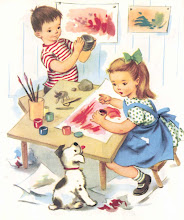
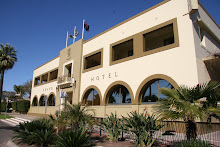
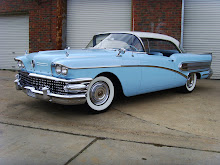





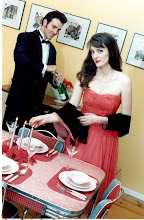







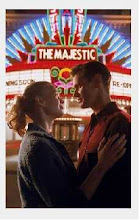



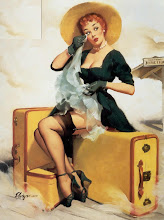
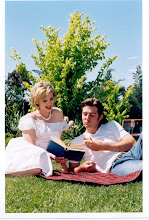
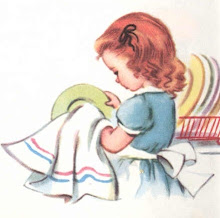































What a fantastic old house - I love the concept of the bedrooms being built into the earth. That would definitely help keep things cool. It's great to hear that it's still being loved by a new family and that its granduer won't just fade away into nothing.
ReplyDeleteThis really is a touching article, thank you for posting it. What the current owners have done is exactly what one who is living in a historic place should do. It's so sad to see historical buildings torn down or completely remodeled, rather than preserved for the next generation.
ReplyDeletejust found this article when looking for a photo, this is my house, im Matilda...
ReplyDeleteHi Matilda - Its a year since you posted your comment about the Olive Hills....I have had trouble with comments on my blogger, but now I can finally respond..... I do hope the article and photos here are to your and your families liking I well remember the day I came to visit and was so inspired by both your beautiful home and your lovely family. Hoping you are well and happy all these 10 years later !
DeleteWhen visiting friends in wodonga we drive past this glorious house. I tel my husband to slow down,as my heart races, my breathing gets faster and my akin becomes clammy, I have a huge smile on my face and the kids ask what I'm doing......I tell them, "this is the house that makes my heart sing".........xo
ReplyDeleteWhat a delightful phrase !! "The house that makes my heart sing" - I do hope that someday you get to live/own a house that makes your heart sing - and I also hope it for myself !! Here's to dreams coming true !!
ReplyDeleteHi There,
ReplyDeleteMy family owned this estate from 1906 to 1920 my Great Grandparents were John Williams and his wife Esther "Ettie" Williams (nee Hart)
She was the younger sister of The Kelly Gangs Steve Hart killed at Glenrowan in June 1880 and the love of Ned Kelly!
Paul O'Keefe
www.neducate.com.au